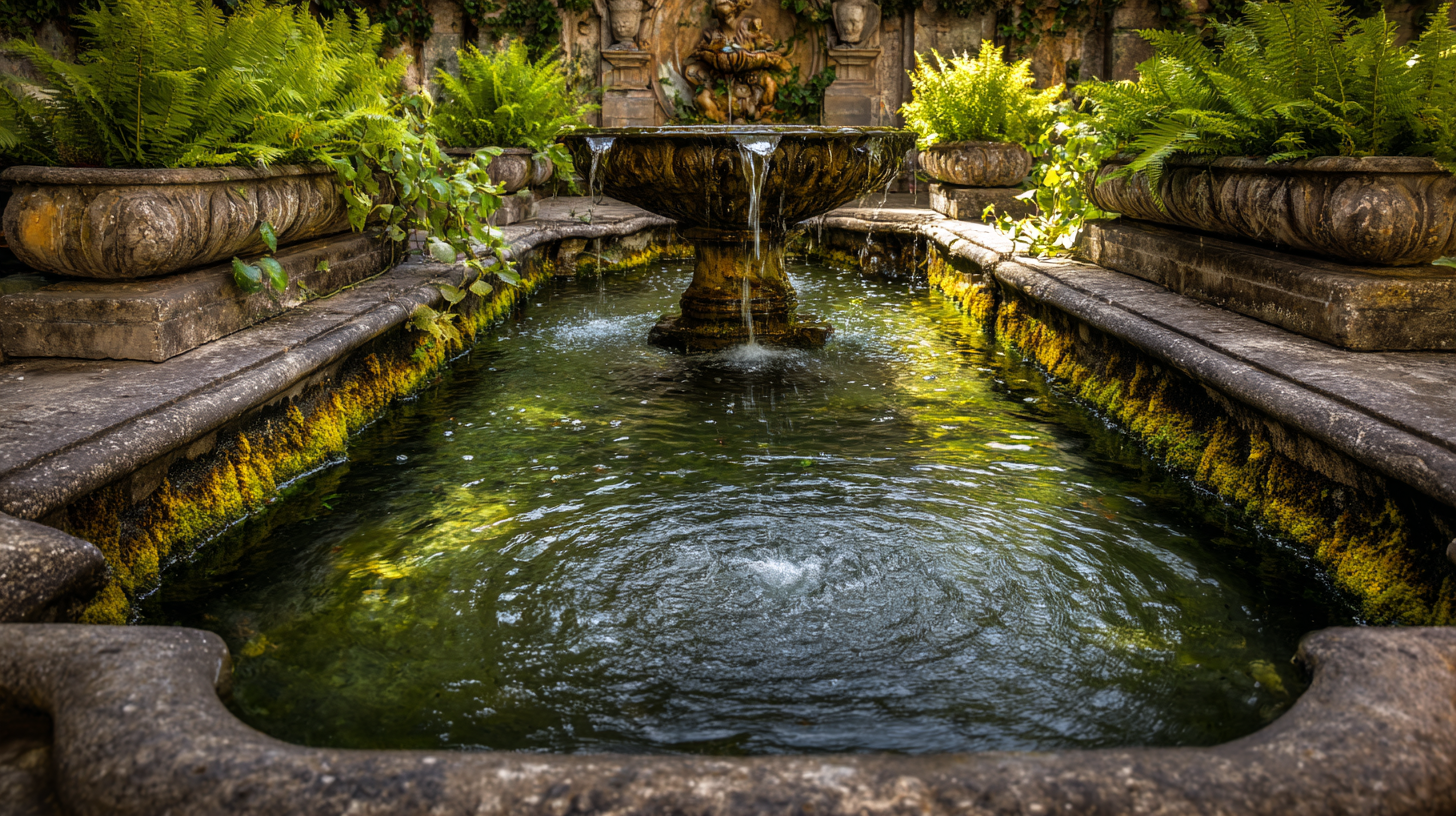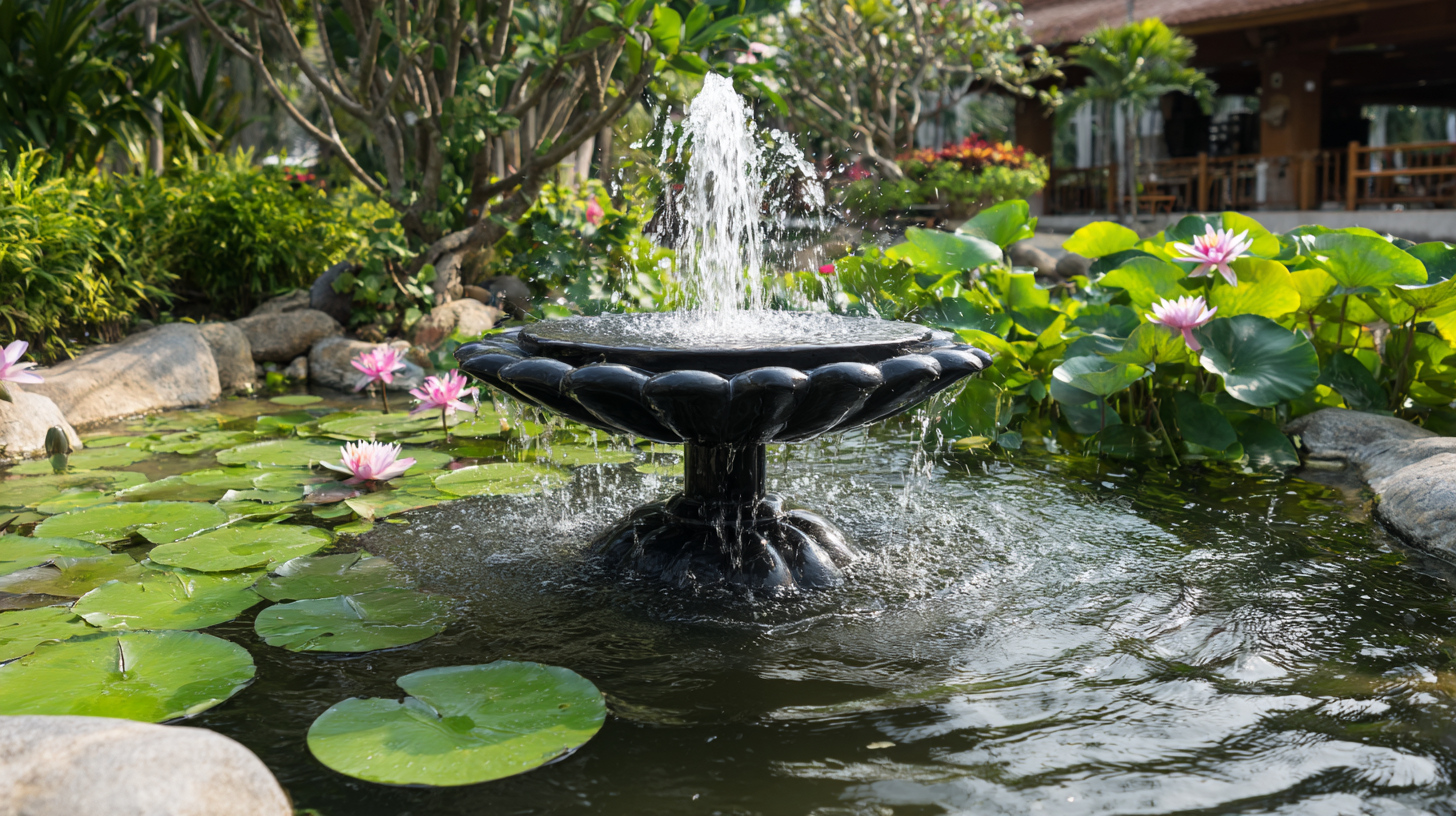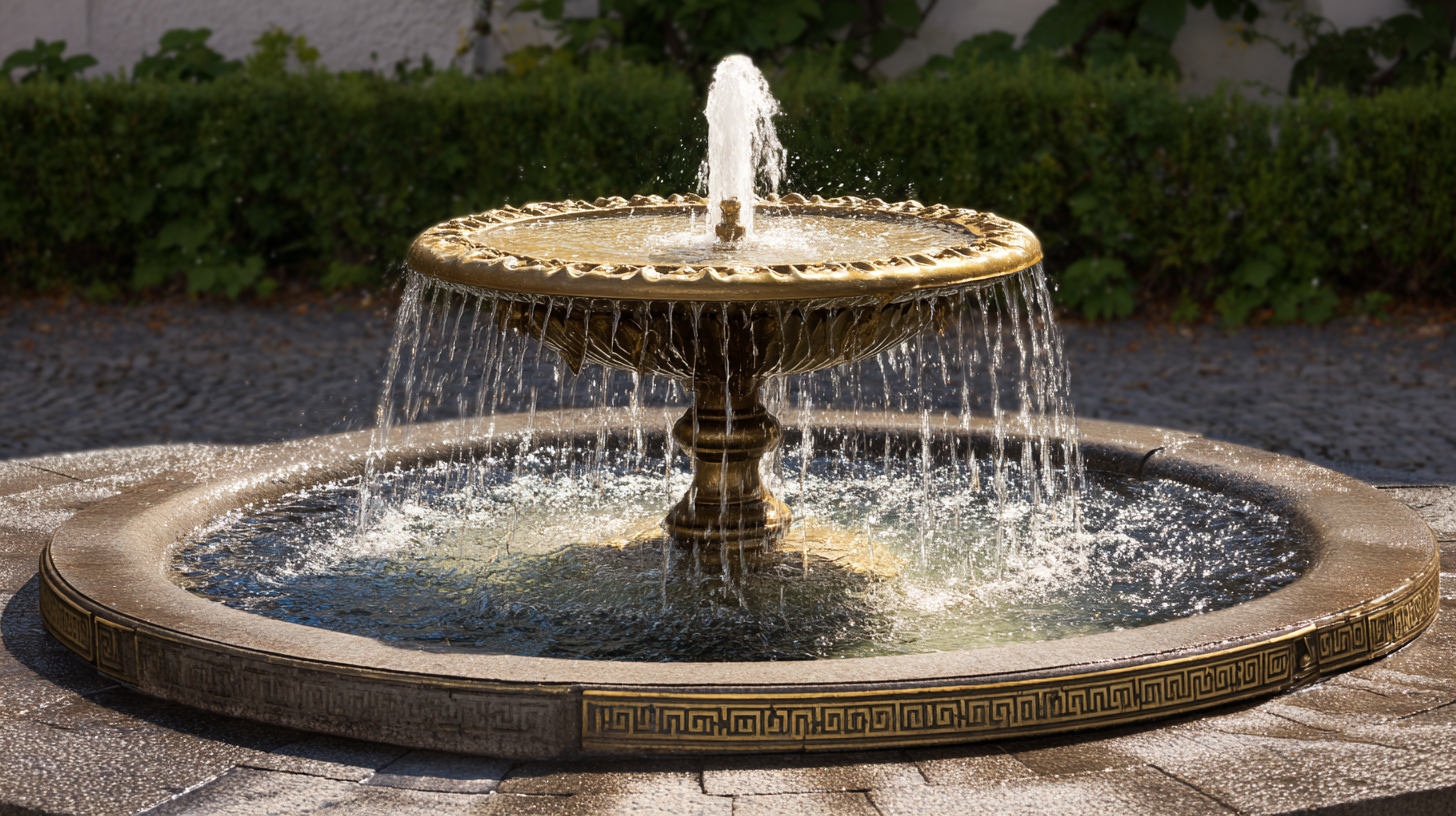
Ultimate Checklist for Choosing the Best Water Fountain Pump for Your Needs
In recent years, the market for water fountain pumps has seen significant growth, driven by an increasing demand for outdoor aesthetic enhancements and eco-friendly water features. According to a report by Grand View Research, the global market for water pumps is expected to reach USD 72.3 billion by 2025, with a substantial segment attributed to decorative applications like garden fountains. Choosing the right water fountain pump is crucial for ensuring optimal performance, energy efficiency, and longevity of your water feature. Factors such as flow rate, power consumption, and durability must be considered to meet both functional needs and aesthetic desires. This ultimate checklist will guide you through the essential criteria to select the best water fountain pump tailored to your specific requirements, enabling you to enhance your outdoor space effectively and sustainably.

Different Types of Water Fountain Pumps and Their Features
When it comes to selecting the right water fountain pump, understanding the different types available and their unique features is crucial. The most common types include submersible pumps, for use underwater, and external pumps, which are placed outside the water feature. According to a recent industry report by IBISWorld, the U.S. water fountain pump market is projected to grow by 3.5% annually, indicating a rising demand for efficient and reliable pumps suited to various applications.
Submersible pumps, typically used in smaller fountains, offer quiet operation and are energy-efficient. They can handle various flow rates and are often designed for easy installation. Conversely, external pumps are ideal for larger installations requiring higher water flow and pressure. These pumps tend to be more powerful but can be noisier than their submersible counterparts. A report from the National Association of Home Builders emphasizes that choosing the right pump based on your fountain’s size and water volume requirements can significantly impact maintenance costs and overall performance.
In addition to their types, features such as adjustable flow settings, energy efficiency ratings, and durability under various weather conditions are vital in the selection process. According to research by the American Society of Landscape Architects, 67% of homeowners prioritize energy-efficient solutions when selecting outdoor features, helping to make a sustainable choice that benefits both the environment and the wallet.
Key Factors to Consider When Choosing the Right Pump
When selecting the best water fountain pump for your needs, several key factors should be taken into account. Firstly, the pump's flow rate is crucial; it determines how much water is circulated, affecting both the aesthetics and the health of your water feature. A pump that doesn’t provide sufficient flow may lead to stagnation, while an overly powerful pump can cause splashing and unwanted noise.
Another vital consideration is the pump's energy efficiency. With rising energy costs, opting for a pump that consumes less electricity can save you money over time. Additionally, assess the pump's durability and maintenance requirements. A well-constructed pump will not only perform reliably but also offer a longer lifespan, reducing the frequency of replacements and repairs. By focusing on these factors, you can ensure that you choose a water fountain pump that meets your specific requirements efficiently and effectively.
How to Calculate the Flow Rate Needed for Your Fountain
When selecting the ideal water fountain pump, understanding the flow rate needed for your fountain is crucial to ensure optimal performance. To calculate the required flow rate, first, determine the volume of water your fountain holds. This can often be accomplished by measuring the dimensions of the fountain and applying the appropriate mathematical formulas for the shape—whether it’s rectangular, circular, or irregular. Once you have the volume in gallons, you can ascertain the flow rate needed to circulate that volume effectively.
A common rule of thumb is to aim for a flow rate that circulates the total volume of your fountain at least once every hour. For instance, if your fountain holds 100 gallons of water, look for a pump that provides a flow rate of at least 100 gallons per hour (GPH). Additionally, consider the design and height of your fountain; taller fountains may require pumps with higher flow rates to achieve the desired water effect. Balancing these factors will help you choose a pump that not only fits your fountain but enhances its aesthetic and functional appeal.
Flow Rate Comparison of Different Pump Types
Benefits of Submersible vs. External Pumps for Water Features
When considering the right pump for your water features, it's essential to weigh the advantages of submersible versus external pumps. Submersible pumps, designed to operate underwater, offer the benefit of reduced noise and a compact design, making them ideal for smaller spaces such as aquariums or garden ponds. According to recent advancements in synchronous reluctance motor (SynRM) technology, these pumps can now be optimized for high efficiency, particularly in solar-powered applications. This innovation enhances the performance of submersible pumps, making them a sustainable choice for eco-conscious users.
On the other hand, external pumps have their own unique benefits. They tend to be more accessible for maintenance, as they are not submerged in water, and can handle larger volumes, making them suitable for larger water features or pond systems. A systematic review of solar-powered water pumping systems emphasizes their synergy with renewable energy solutions, highlighting that external pumps can be more efficiently integrated with solar technology for rural applications. Both pump types serve essential roles depending on the specific water feature requirements, and understanding these differences can lead to more informed decisions for your water features.

Maintenance Tips to Prolong the Life of Your Water Fountain Pump
 When it comes to maintaining a water fountain pump, regular upkeep is essential for ensuring its longevity and optimal performance. One of the most important maintenance tips is to check and clean the pump regularly. Debris such as leaves, dirt, and algae can clog the impeller and intake screen, leading to reduced flow and potential damage. To keep your pump running smoothly, inspect it at least once a week. A gentle rinse with water can help clear any built-up contaminants, ensuring your fountain remains a picturesque focal point in your garden or indoor space.
When it comes to maintaining a water fountain pump, regular upkeep is essential for ensuring its longevity and optimal performance. One of the most important maintenance tips is to check and clean the pump regularly. Debris such as leaves, dirt, and algae can clog the impeller and intake screen, leading to reduced flow and potential damage. To keep your pump running smoothly, inspect it at least once a week. A gentle rinse with water can help clear any built-up contaminants, ensuring your fountain remains a picturesque focal point in your garden or indoor space.
Another crucial aspect of maintenance is monitoring the water levels in your fountain. Low water levels can cause the pump to run dry, leading to overheating and failure. Always ensure that the water level is above the pump's intake. Additionally, using a filter can help trap sediments before they enter the pump, reducing wear and tear over time. Lastly, seasonal checks are vital; during winter, remove the pump and store it in a dry place to prevent freeze damage. By implementing these maintenance tips, you can enjoy a beautifully functioning water fountain for years to come.
